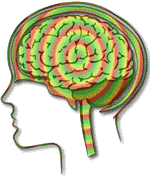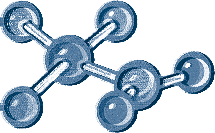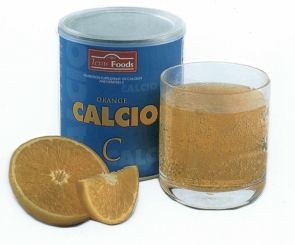Yoghurt : Probiotic
1. Yogurt is easier to digest than milk. Many people who cannot tolerate milk, either because of a protein allergy or lactose intolerance, can enjoy yogurt. The culturing process makes yogurt more digestible than milk. The live active cultures create lactase, the enzyme lactose-intolerant people lack, and another enzyme contained in some yogurts (beta-galactosidase) also helps improve lactose absorption in lactase-deficient persons. Bacterial enzymes created by the culturing process, partially digest the milk protein casein, making it easier to absorb and less allergenic. In our pediatric practice, we have observed that children who cannot tolerate milk can often eat yogurt without any intestinal upset. While the amount varies among brands of yogurt, in general, yogurt has less lactose than milk. The culturing process has already broken down the milk sugar lactose into glucose and galactose, two sugars that are easily absorbed by lactose-intolerant persons.
2. Yogurt contributes to colon health. There’s a medical truism that states: “You’re only as healthy as your colon.” When eating yogurt, you care for your colon in two ways. First, yogurt contains lactobacteria, intestines-friendly bacterial cultures that foster a healthy colon, and even lower the risk of colon cancer. Lactobacteria, especially acidophilus, promotes the growth of healthy bacteria in the colon and reduces the conversion of bile into carcinogenic bile acids. The more of these intestines-friendly bacteria that are present in your colon, the lower the chance of colon diseases. Basically, the friendly bacteria in yogurt seems to deactivate harmful substances (such as nitrates and nitrites before they are converted to nitrosamines) before they can become carcinogenic.
Secondly, yogurt is a rich source of calcium – a mineral that contributes to colon health and decreases the risk of colon cancer. Calcium discourages excess growth of the cells lining the colon, which can place a person at high risk for colon cancer. Calcium also binds cancer-producing bile acids and keeps them from irritating the colon wall. People that have diets high in calcium (e.g. Scandinavian countries) have lower rates of colorectal cancer. One study showed that an average intake of 1,200 milligrams of calcium a day is associated with a 75 percent reduction of colorectal cancer. As a survivor of colon cancer, I have a critical interest in the care of my colon. My life depends on it.
3. Yogurt improves the bioavailability of other nutrients. Culturing of yogurt increases the absorption of calcium and B-vitamins. The lactic acid in the yogurt aids in the digestion of the milk calcium, making it easier to absorb.
4. Yogurt can boost immunity. Researchers who studied 68 people who ate two cups of live-culture yogurt daily for three months found that these persons produced higher levels of immunity boosting interferon. The bacterial cultures in yogurt have also been shown to stimulate infection-fighting white cells in the bloodstream. Some studies have shown yogurt cultures to contain a factor that has anti-tumor effects in experimental animals.
| NUTRITIP: Yogurt – Good for Young and Old Yogurt is a valuable health food for both infants and elderly persons. For children, it is a balanced source of protein, fats, carbohydrates, and minerals in a texture that kids love. For senior citizens, who usually have more sensitive colons or whose intestines have run out of lactase, yogurt is also a valuable food. Elderly intestines showed declining levels of bifidus bacteria, which allow the growth of toxin-producing and, perhaps, cancer-causing bacteria. |
5. Yogurt aids healing after intestinal infections. Some viral and allergic gastrointestinal disorders injure the lining of the intestines, especially the cells that produce lactase. This results in temporary lactose malabsorption problems. This is why children often cannot tolerate milk for a month or two after an intestinal infection. Yogurt, however, because it contains less lactose and more lactase, is usually well-tolerated by healing intestines and is a popular “healing food” for diarrhea. Many pediatricians recommend yogurt for children suffering from various forms of indigestion. Research shows that children recover faster from diarrhea when eating yogurt. It’s good to eat yogurt while taking antibiotics. The yogurt will minimize the effects of the antibiotic on the friendly bacteria in the intestines.
| NUTRITIP: A Chaser for Antibiotics Antibiotics kill not only harmful bacteria; they also kill the healthy ones in the intestines. The live bacterial cultures in yogurt can help replenish the intestines with helpful bacteria before the harmful ones take over. I usually “prescribe” a daily dose of yogurt while a person is taking antibiotics and for two weeks thereafter. |
A 1999 study reported in Pediatrics showed that lactobacillus organisms can reduce antibiotic-associated diarrhea.
6. Yogurt can decrease yeast infections. Research has shown that eating eight ounces of yogurt that contains live and active cultures daily reduces the amount of yeast colonies in the vagina and decreases the incidence of vaginal yeast infections.
7. Yogurt is a rich source of calcium. An 8-ounce serving of most yogurts provides 450 mg. ofcalcium, one-half of a child’s RDA and 30 to 40 percent of the adult RDA for calcium. Because the live-active cultures in yogurt increase the absorption of calcium, an 8-ounce serving of yogurt gets more calcium into the body than the same volume of milk can.
8. Yogurt is an excellent source of protein. Plain yogurt contains around ten to fourteen grams of protein per eight ounces, which amounts to twenty percent of the daily protein requirement for most persons. In fact, eight ounces of yogurt that contains live and active cultures, contains 20 percent more protein than the same volume of milk (10 grams versus 8 grams). Besides being a rich source of proteins, the culturing of the milk proteins during fermentation makes these proteins easier to digest. For this reason, the proteins in yogurt are often called “predigested.”
9. Yogurt can lower cholesterol. There are a few studies that have shown that yogurt canreduce the blood cholesterol. This may be because the live cultures in yogurt can assimilate the cholesterol or because yogurt binds bile acids, (which has also been shown to lower cholesterol), or both.
10. Yogurt is a “grow food.” Two nutritional properties of yogurt may help children with intestinal absorption problems grow: the easier digestibility of the proteins and the fact that the lactic acid in yogurt increases the absorption of minerals. And even most picky-eaters will eat yogurt in dips and smoothies and as a topping.
Perhaps we can take a health tip about yogurt cultures from cultures who consume a lot of yogurt, such as the Bulgarians who are noted for their longer lifespan and remain in good health well into old age.
Article extracted from : http://www.askdrsears.com/topics/family-nutrition/yogurt/10-reasons-yogurt-top-health-food







 Improving Brain Function
Improving Brain Function Because the brain cells are largely composed of fat, the right kinds of fat in the diet are one of the most critical elements in creating and maintaining brain health. The same precious Omega-3 fatty acids that promote healthy hearts can also help our brains. Primary sources of those health-giving fats are fatty cold-water fish including salmon, mackerel, anchovies, sardines, herring and Atlantic sturgeon. Eat fish a minimum of three times a week. Canola, olive and flax-seed oil are good plant sources of Omega-3 fatty acids, with flax seeds, which can also be ground and added to foods, being the supreme, most recommended source.
Because the brain cells are largely composed of fat, the right kinds of fat in the diet are one of the most critical elements in creating and maintaining brain health. The same precious Omega-3 fatty acids that promote healthy hearts can also help our brains. Primary sources of those health-giving fats are fatty cold-water fish including salmon, mackerel, anchovies, sardines, herring and Atlantic sturgeon. Eat fish a minimum of three times a week. Canola, olive and flax-seed oil are good plant sources of Omega-3 fatty acids, with flax seeds, which can also be ground and added to foods, being the supreme, most recommended source. Because the brain in made up largely of fatty acids, it is susceptible to oxidation damage caused by free radicals - highly reactive molecules that attack and damage cell membranes, protein and even our genetic code - and in doing so bring about age and 'dis-ease'. Antioxidants are nutrients which combat and neutralize free radicals. The primary weapons in this ongoing fight are vitamins C and E, carotenoids and the mineral selenium. Many foods are rich sources of antioxidants. Carotenoids are found in dark orange and dark green leafy vegetable, such as carrots, sweet potatoes, kale and spinach. Vitamin C is found in citrus fruits and vegetable like broccoli and peppers. Vitamin E is found in seeds and nuts as well as soybeans and vegetable oils. Selenium is present in seafood, grains and Brazil nuts. Supplementation or reinforcement of antioxidants is recommended since they are the major police force of the body, thought to deflect virtually all chronic 'dis-eases' including heart disease, cancer, cataracts, Parkinson's and the aging process itself.
Because the brain in made up largely of fatty acids, it is susceptible to oxidation damage caused by free radicals - highly reactive molecules that attack and damage cell membranes, protein and even our genetic code - and in doing so bring about age and 'dis-ease'. Antioxidants are nutrients which combat and neutralize free radicals. The primary weapons in this ongoing fight are vitamins C and E, carotenoids and the mineral selenium. Many foods are rich sources of antioxidants. Carotenoids are found in dark orange and dark green leafy vegetable, such as carrots, sweet potatoes, kale and spinach. Vitamin C is found in citrus fruits and vegetable like broccoli and peppers. Vitamin E is found in seeds and nuts as well as soybeans and vegetable oils. Selenium is present in seafood, grains and Brazil nuts. Supplementation or reinforcement of antioxidants is recommended since they are the major police force of the body, thought to deflect virtually all chronic 'dis-eases' including heart disease, cancer, cataracts, Parkinson's and the aging process itself.

![pix200810202262154[1].jpg](http://odili.net/news/source/2010/mar/3/punch/images/pix200810202262154%5B1%5D.jpg)